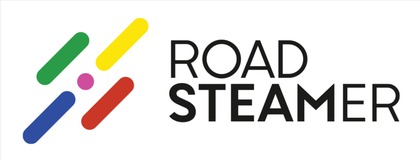STEAM Roadmap for Science Education in Horizon Europe
Provide your feedback and suggestions
Changes at "Development and testing of a STEAM holistic curriculum at secondary, vocational and university education level"
Body
-
-["
- Relevant for
-
🔵 Research (DG RTD)🟡 Education (DG EAC)💡 Expands the STEM strategic plan
- Description
- Development and deployment of a variety of options for a STEAM holistic curriculum to be tested in longitudinal large scale control trials to derive evidence to inform policy decisions (Banerjee & Duflo, 2009), taking into account the STEAM criteria (Collaboration, Disciplinary inter-relationships, Thinking-making-doing, Creativity, Real-world connection, and Inclusion / Personalisation / Empowerment) and EU priorities (focus on skills-based education, digital skills, industry relations, etc.). To investigate intersectionality, studies should investigate the effectiveness of STEAM programs by variables of vulnerability (gender, country, disability, special learning needs, family background, family support, etc.), and teachers/lecturer ability.
- Examples
- Potential funding instrument
- Horizon, Pillar 2 and WIDERA
- Suggested time frame
- 2028-34
- Alignment with STEM Education Strategic Plan 2025
- The action expands the scope providing indications for conducting extensive research on the assessment of actions to inform policy making (3.2 pg. 8, In 2025, set up a European STEM Executive Panel at top business/political/administrative level to advise on strategic issues including curriculum modernisation, industry feedback on skills needs across industrial sectors, innovative teaching and content, and embedding academic-business cooperation in STEM education. The STEM Panel would provide actionable recommendations to foster close cooperation between business and STEM education to the European Skills High Level Board and make the results of its work publicly available to any other interested party.)
-
+["
- Relevant for
-
🔵 Research (DG RTD)🟡 Education (DG EAC)💡 Expands the STEM strategic plan
- Description
- Development and deployment of a variety of options for a STEAM holistic curriculum to be tested in longitudinal large scale control trials to derive evidence to inform policy decisions (Banerjee & Duflo, 2009), taking into account the STEAM criteria (Collaboration, Disciplinary inter-relationships, Thinking-making-doing, Creativity, Real-world connection, and Inclusion / Personalisation / Empowerment) and EU priorities (focus on skills-based education, digital skills, industry relations, etc.). To investigate intersectionality, studies should investigate the effectiveness of STEAM programs by variables of vulnerability (gender, country, disability, special learning needs, family background, family support, etc.), and teachers/lecturer ability.
- Examples
- Potential funding instrument
- Horizon, Pillar 2 and WIDERA
- Suggested time frame
- 2028-2034
- Alignment with STEM Education Strategic Plan 2025
- The action expands the scope providing indications for conducting extensive research on the assessment of actions to inform policy making (3.2 pg. 8, In 2025, set up a European STEM Executive Panel at top business/political/administrative level to advise on strategic issues including curriculum modernisation, industry feedback on skills needs across industrial sectors, innovative teaching and content, and embedding academic-business cooperation in STEM education. The STEM Panel would provide actionable recommendations to foster close cooperation between business and STEM education to the European Skills High Level Board and make the results of its work publicly available to any other interested party.)
- Relevant for
-
🔵 Research (DG RTD)🟡 Education (DG EAC)💡 Expands the STEM strategic plan
- Description
- Development and deployment of a variety of options for a STEAM holistic curriculum to be tested in longitudinal large scale control trials to derive evidence to inform policy decisions (Banerjee & Duflo, 2009), taking into account the STEAM criteria (Collaboration, Disciplinary inter-relationships, Thinking-making-doing, Creativity, Real-world connection, and Inclusion / Personalisation / Empowerment) and EU priorities (focus on skills-based education, digital skills, industry relations, etc.). To investigate intersectionality, studies should investigate the effectiveness of STEAM programs by variables of vulnerability (gender, country, disability, special learning needs, family background, family support, etc.), and teachers/lecturer ability.
- Examples
- Potential funding instrument
- Horizon, Pillar 2 and WIDERA
- Suggested time frame
- 2028-2034
- Alignment with STEM Education Strategic Plan 2025
- The action expands the scope providing indications for conducting extensive research on the assessment of actions to inform policy making (3.2 pg. 8, In 2025, set up a European STEM Executive Panel at top business/political/administrative level to advise on strategic issues including curriculum modernisation, industry feedback on skills needs across industrial sectors, innovative teaching and content, and embedding academic-business cooperation in STEM education. The STEM Panel would provide actionable recommendations to foster close cooperation between business and STEM education to the European Skills High Level Board and make the results of its work publicly available to any other interested party.)




